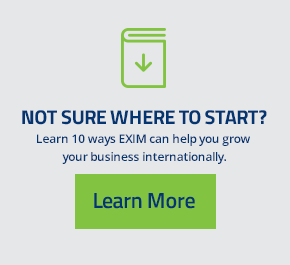Advantage U.S.A.
Are you preparing an international marketing plan in a country that has signed a Free Trade Agreement (FTA) with the U.S.? Identifying the price point to compete against your foreign competitors has just been made easier by a recent update of the Department of Commerce’s on-line FTA Tariff Tool. The FTA Tariff Tool is a free, user-friendly online tool that displays tariff information searchable by keyword or tariff code.
The ability to predict tariff reduction and elimination schedules can lower the cost of your competitive analysis saving you both time and money. Furthermore, this foresight allows you to better define your sales goals and strategies while giving you greater operational and financial flexibility. A credible market strategy will also improve your prospect of securing a loan with lenders.
With Which Countries Does The United States Currently Have An FTA?
The United States has 14 FTAs in force with 20 countries. The two regional FTA’s are the DR-CAFTA which include Costa Rica, The Dominican Republic, El Salvador, Guatemala, Honduras, and Nicaragua and the NAFTA, Canada and Mexico. Bilateral U.S. FTA Partner countries include, Australia, Bahrain, Chile, Colombia, Israel, Jordan, Korea, Morocco, Oman, Panama , Peru, and Singapore.
So How do I Calculate My Tariff on Exports to FTA Partner Countries?
This tariff search tool allows users to find tariff information on all products covered under the U.S. FTAs. The tool shows the tariff applied on the date the FTA enters into force and the rates each subsequent year as the tariffs are eliminated under the agreement.
The FTA Tariff Tool is a free, easy-to-use tool that displays tariff information searchable by a tariff code. The update now includes the latest information on tariffs for Trans Pacific Partnership (TPP) members. It is worth noting that the TPP Agreement has not entered into force as yet. The FTA Tariff Tool has information on the tariff elimination schedule as set out in the TPP agreement and other bilateral FTA partners.
There are two basic types of tariffs imposed on imported goods. One is calculated as a percentage of the total value of the item. The other is determined as a set fee per number of items or by weight.
How to Use this Tool?
Once you launch the FTA Tariff tool, it will prompt you to answer three simple questions about your business:
- Are you importing or exporting?
- Select the FTA Partner Country (drop-down list)
- Search by an HS (Harmonized System) Code
If you don’t know your HS code, the U.S. Census Bureau’s Schedule B Search Engine can help you determine your HS code by allowing you to search by keyword or product description. The HS code can be a 4, 6, or 8 digit number that is used for a category of products. For example, you could search using “Skincare products” as keywords. The in-built search engine will prompt you to narrow down the product form by “powder” or “other”. By clicking on the form you are looking for, the system will give you a list of HS codes that match your product characteristics. You can then choose the one that best matched your product and use that HS Code (Schedule B Number).
Find out how EXIM Bank can help you finance your export expansion and reduce your credit risks with our Working Capital Guarantee Program and Export Credit Insurance products.
Do You Need Financing for Your Exports?
To find out more about what financing options are available for your exports and how export credit insurance can help your business mitigate risk and increase competitiveness, talk to one of our Trade Finance Specialists located in your area.

